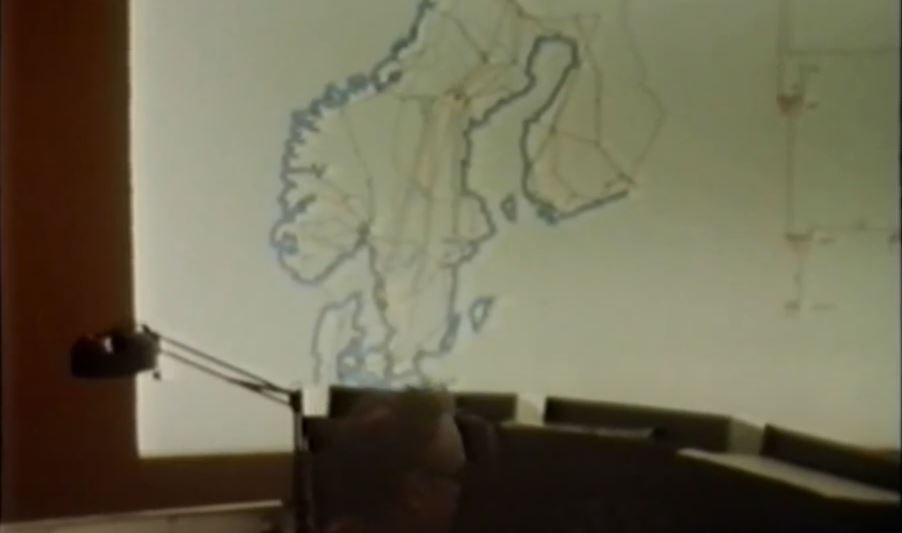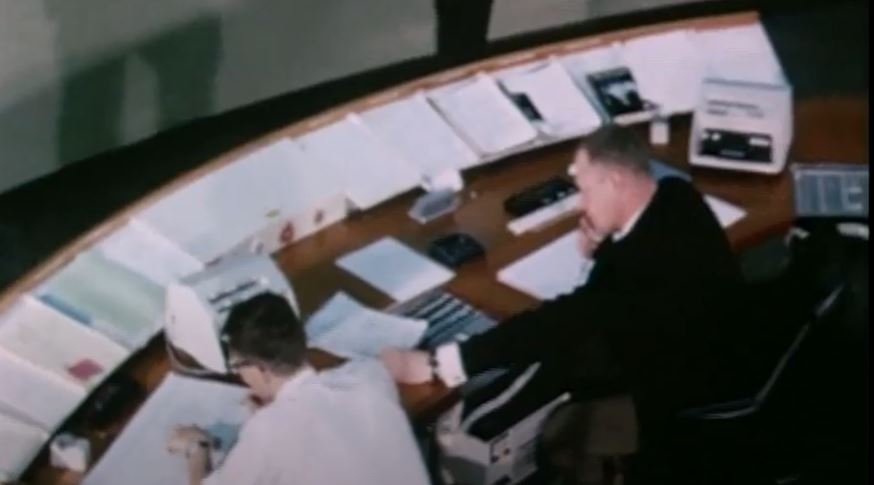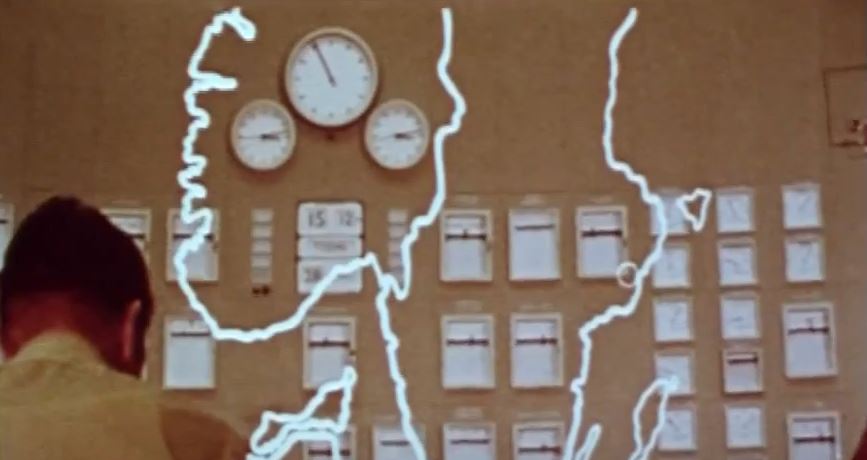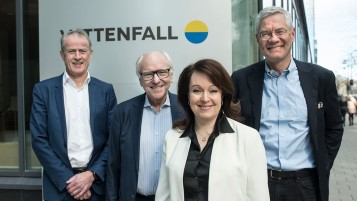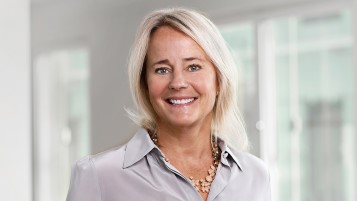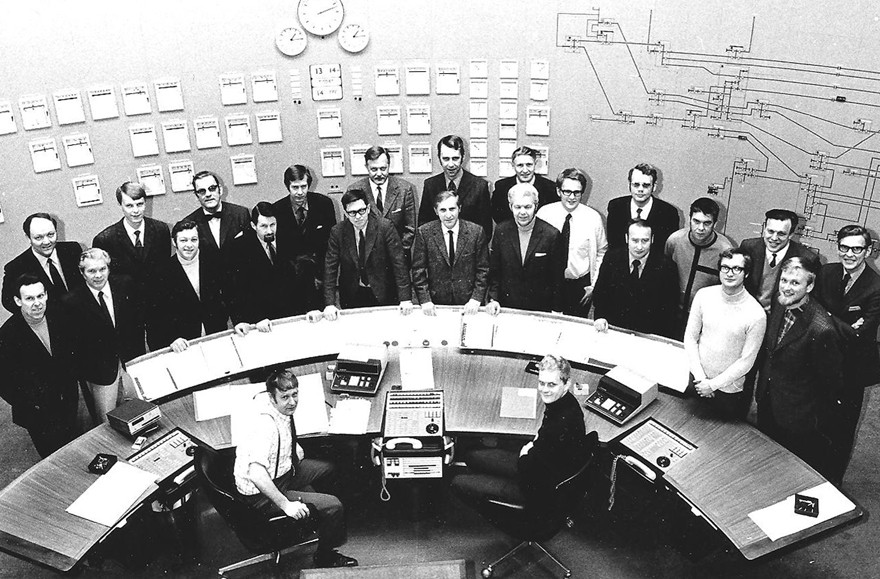
The Power Control team – supervisor of the power
A power system must be monitored and controlled around the clock. The production of electricity must correspond to consumption at all times. At the same time, Vattenfall must ensure that its various power plants are being exploited optimally. In order to achieve this, there is Power Control, a unit developed for – and sometimes ahead of – its time. For example, one of the technologies developed for Power Control was of importance for the basis of the Internet.
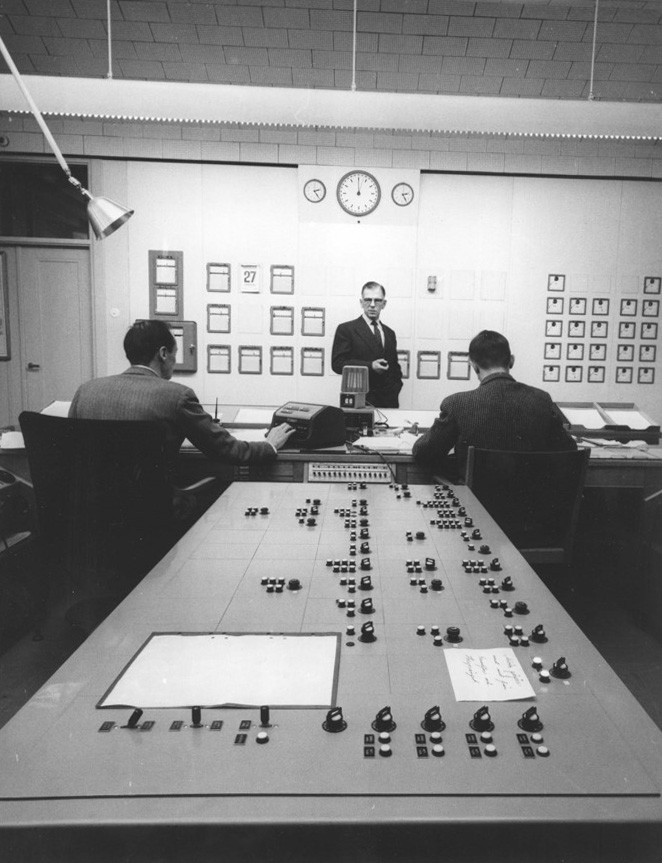
Control room from 1959. In the middle of the picture, facing the camera, is Hans Krüger. Year: 1959 | Place: - | Creator: Okänd | ID: vf200091
Vattenfall’s central control centres – known as Power Control from the early 1950s onwards – emerged gradually. There was an operating engineer in charge at the head office, then in central Stockholm, in the 1930s. His job was to look after operations management for Vattenfall’s connected grids. By spring 1938, all of Sweden’s electrical grids were connected up. In addition to coordinating Vattenfall’s production, Power Control then also had responsibility for maintaining the balance between production and consumption, in other words, keeping the frequency and synchronizing time, etc. for the entire Swedish power system.
In the 1930s, 1940s and 1950s, there was only an operating engineer in charge at Power Control during the day, with someone on call at night, first at home and later at an apartment situated at Power Control. Before the night, a night order was given to a suitable power station with the task of maintaining the frequency, i.e. the balance between consumption and production, with the help of its own and other stations.
Related documents
Explore clippings from newspapers and other publications.
- "Kontrollrummet", an article about Power Control from the PSV Magazine 1948
- Power Control article from the magazine "Vi i Vattenfall" 1956
- "Kraftbörs med miljoner i", an article about Power Control from 1981
- "Han håller koll på kraftläget", an article about Power Control from 1996
- Professor Arne Kaijser about the history of the Power Control team and TIDAS. From the book Historike i oppdrag published by Novus
Power Control takes over more tasks
When Vattenfall’s head office was moved to Råcksta in 1962, a three-shift pattern was introduced for control engineers. Frequency maintenance and production changes could then be handled by Power Control around the clock. The telephone was still used to order the starting, stopping or regulating of hydroelectric power. The frequency responsibility also came to include the entire Nordic area, as the countries were increasingly connected up by power lines and cables.

Control room from 1971. From the left: Gunnar Ålfors, Karl-Erik Näsman, Ove Sernstad and Eric Lundmark. Year: 1971 | Place: - | Creator: Okänd | ID: vf200092
But things did not always go well. One evening, a young operating engineer, Gunnar Ålfors, plunged the Norwegian capital Oslo into darkness by issuing an incomplete order to the operation centre in Stenkullen. Next morning he thought he would receive a serious telling-off. However, the manager, Lars Gustafsson, said that he had once plunged Copenhagen into darkness in the same way. So Gunnar was forgiven. The fact that Gunnar wrote a new instruction that removed the risk of the same thing happening again may also have contributed to his being forgiven. All Lars had to do was sign it.

Christmas card with the Power Control staff from 1971. Year: 1971 | Place: - | Creator: Okänd | ID: vf200093
Multi-year, annual and seasonal planning was performed at the head office, while the power balance for the next week was done by one of a handful of very experienced engineers, known as “yellow” operating engineers. Daily planning was handled by two of them. One of them was in place all the time, so there were many hours of work, as two people had to share the week’s 168 hours. They were constantly on duty and slept at night in an apartment next to Power Control if nothing remarkable happened.
They were also responsible for operation of the main grid. He (for it was always a he) was also involved in all the electric power business with other electricity producers both within and outside Sweden. Pricing was based on the principle of equal shared profit.
Power Control was at its busiest during disruptions. During such events, attention from the outside world, particularly the media, was great. The same was true in extreme weather conditions that affected the power balance.
New requirements lead to TIDAS and major reconstruction
TIDAS (Total Integrated Data Acquisition System) was a huge project for better monitoring and control of the power system. It was the world’s first Internet-like system. It was ordered by Vattenfall and supplied by Asea and TRW Controls Operations. The project is another example of successful cooperation between Vattenfall and Asea. Asea could use the experience of TIDAS to conquer the global market with their large operation centre systems.
TIDAS contributed to the development of the Internet! Asea had actually found a solution to the issue of how the route should be controlled (adaptive routing) for information packets (packet switching). They refined the solutions produced in the ARPA net, the experimental network between a number of American universities that is usually considered the origin of the Internet.

The inauguration of Tidas in 1977. In the picture amongst others are Jonas Norrby, Jan-Erik Ryman, Gunnar Ålfors, Olof Johansson, Curt Nicolin and Sivert Göthlin. Year: 1977 | Place: - | Creator: Okänd | ID: vf200094
TIDAS was inaugurated by the Swedish Minister of Energy in 1977, eight years after Vattenfall began to draw up the tender documents. For Power Control, TIDAS represented a revolution. It was no longer necessary to obtain information over the phone. Instead, all the information was directly accessible. TIDAS also meant computerised storage and processing of operational data, printout of daily reports and financial settlement.

Control room from 1981. From the left: Anders Vikman, Gunnar Ålfors and Ingmar Vretman. Year: 1981 | Place: - | Creator: Okänd | ID: vf200095
New requirements – incorporation, deregulation and wind power
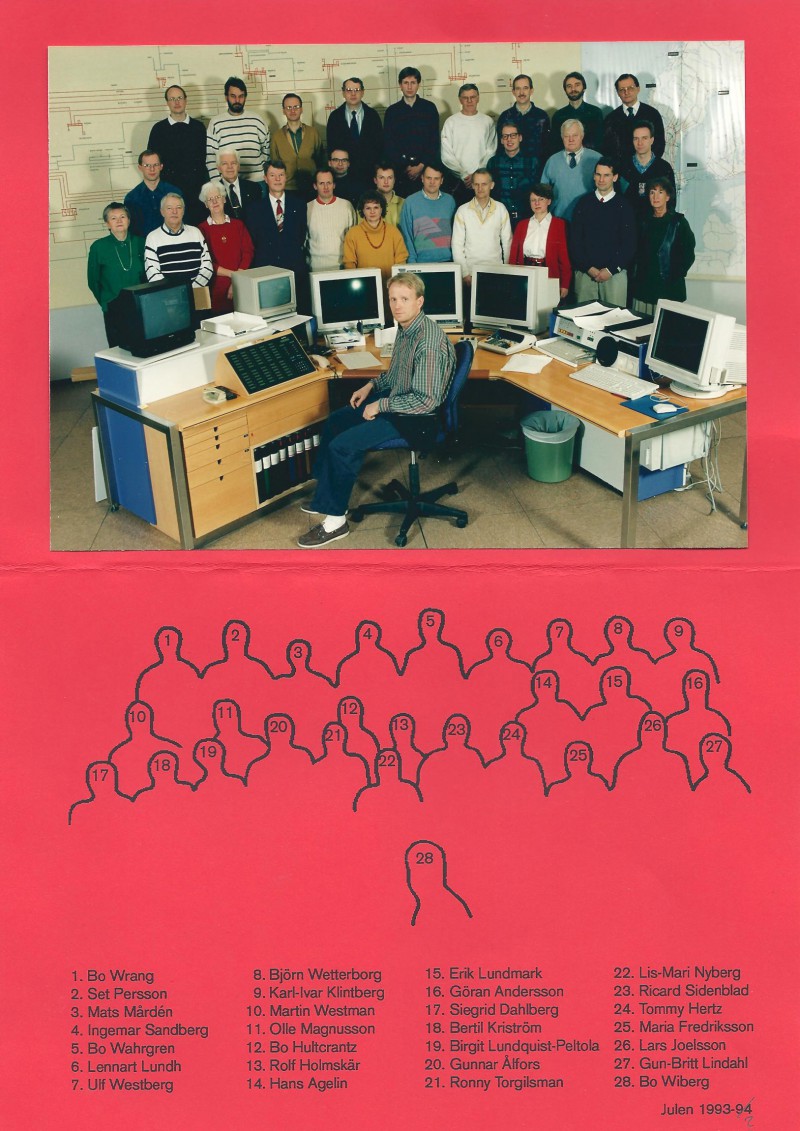
Christmas card with the Power Control personal from 1993. Year: 1993 | Place: - | Creator: Okänd | ID: vf200096
From 1992, when Vattenfall was incorporated and the transmission system was taken over by the new public utility Svenska Kraftnät (SvK), Power Control was divided up between Vattenfall AB and SvK. Initially, staff from both companies sat in the same control centre. SvK then moved to its own control centre. However, Vattenfall still had a contract from SvK to manage frequency maintenance for a transitional period.
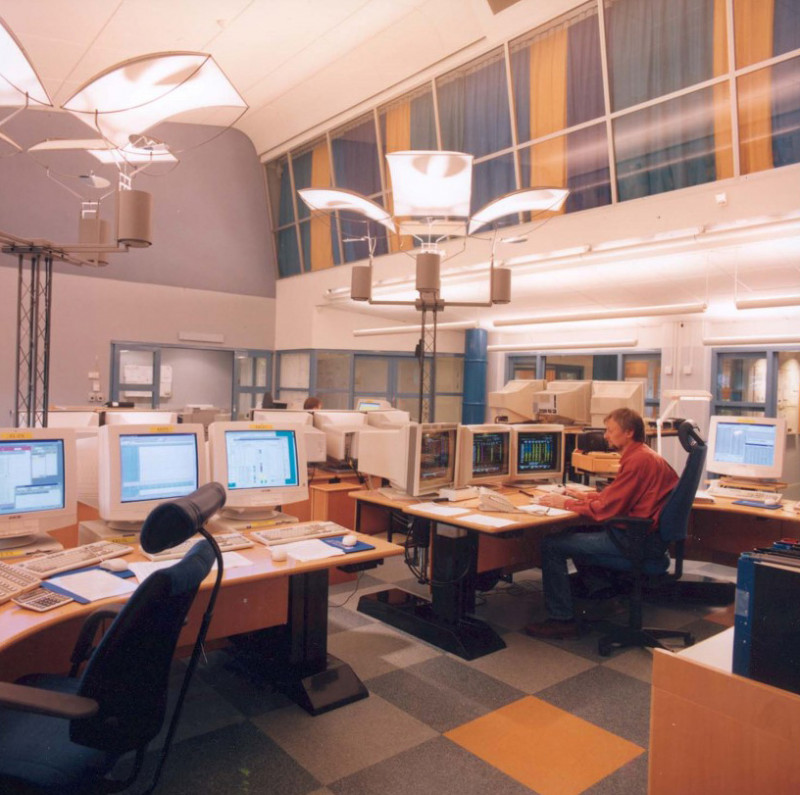
Control room from 1998. In the picture: Lars-Inge Gustafsson. Year: 1998 | Place: - | Creator: Okänd | ID: vf200097
After electricity market deregulation and establishment of a Nordic power exchange in 1996, traditional duties were expanded for Power Control to include submitting purchase and sale bids to the exchange. In addition, bids for up and down regulation of production were submitted to SvK on the ‘balance market’.
The increasing volume of renewable and variable production, mainly wind, now sets new requirements for Power Control. But new requirements are something that Power Control has always had to adapt to, so the expertise and familiarity is in place.
Related media
Video player requires marketing cookies.
To view this content please click here to allow marketing cookies.
Nordic cooperation in the 80s (in Swedish)
Video player requires marketing cookies.
To view this content please click here to allow marketing cookies.
Computerized planning in 1957 (in Swedish)
Video player requires marketing cookies.
To view this content please click here to allow marketing cookies.
Power Control in Råcksta in 1969 (in Swedish)
Video player requires marketing cookies.
To view this content please click here to allow marketing cookies.
Power Control in Råcksta in the 1970s (in Swedish)
Video player requires marketing cookies.
To view this content please click here to allow marketing cookies.

